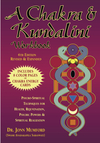An Interview with Jonn Mumford
1. Your first book, Psychosomatic Yoga, was published in 1962. At that time there was very little interest in the spirituality of the East, although it exploded during that decade. Why do you think the popularity of Eastern spirituality has grown over the past forty years?
The 1960s represented a tremendous opening of the Western mind to concepts of Yoga, particularly through the popularization of Maharishi Mahesh Yogi and his popular Transcendental Meditation, or "TM," movement.
However, the soil in America had already been richly fertilized by Swami Vivekananda visiting at the turn of the nineteenth century and then by Swami Rama Tirtha who visited America shortly after Vivekananda. It is also worth remembering that American counter-cultural movements from the transcendentalists to the beats were drawn to Hindu and Buddhist philosophy. But it was not until the 1960s that teachings became widely available to the general public.
The key to the present awakening and search for meaning through Yoga probably started in the 1970s, with a growing awareness that materialism and consumerism represented little solace. It was fueled by the sixties' counterculture and the influence of Timothy Leary, Bhagavan Das, Ram Das, and the arrival in the west of Trungpa Rinpoche and other Tibetan refugees. But why did this counterculture grow?
Our mainstream Western attitude, at a superficial level, favors the ideal that nothing matters—except the pursuit of wealth and power; consumerism has become almost the sole object and goal of life. Our way of living, reinforced by relentless media bombardment, molds us as voracious, bipedal eaters of goods and chattels.
Poverty is evident in India, but not impoverishment of the being—nor is to be poor in India synonymous with destitution. The Pujas (rituals of Hinduism) sustain each individual's dignity and ensure a meaningful existence within the whole—good "old-fashioned values" that we have lost in a sea of technology and economic obsession. Do not misunderstand me as implying India does not have problems—they certainly have—but to me they seem more fixable than our present Western dilemma.
2. That first book has now been massively expanded as a new title: A Chakra & Kundalini Workbook. There many available books about Chakras and Kundalini. How is this one different?
The matrix from which the subject matter comes is based upon a lifetime of my personal initiation by Indian teachers, classical training, and my affiliation with traditional Indian orders. The success of A Chakra & Kundalini Workbook rests with much original material, exercises, and techniques that have never been so explicitly expressed. Let me give an example.
In A Chakra & Kundalini Workbook I have clearly stated that correlating the Chakras with physical entities is really a clumsy Occidental tendency to find physical explanations for abstractions about metaphysical realities. One of the values of my book is that through working on the techniques and exercises students come to clearly understand this difference and that so-called location of the Chakras is really a switch-point to the realm of the Chakra and not the Chakra itself.
I define a Chakra as possessing the same qualities as the Euclidian point. That is, a Chakra, like the point, has locus or location but not dimensionality—however, working with this concept gives rise to concrete materializations. This is rather similar to the architect whose plans exist in his head, are translated to paper, beginning with the point or first stroke, and ultimately crystallize into an objective three-dimensional skyscraper or installation.
3. A Chakra & Kundalini Workbook is really a course of study. You have a twelve-week practice schedule for learning and being able to perform the techniques in the book. Is this really effective? I know of some teachers who charge hundreds of dollars for just a tiny bit of what is in here and advise many months of practice. How would a person be different after completing this book?
It would be impossible to work through each chapter systematically and not become changed for the better in the sense that an internal integration of Yoga practices would occur. The alchemical affects of this work result in a more confident, focused searcher who has accumulated experiences that will reinforce his or her desire to pursue the inner life. Personal transformation from working with A Chakra & Kundalini Workbook will result according to a precise mathematical ratio of the student's readiness and sincerity.
4. All through A Chakra & Kundalini Workbook there are associations between what you are sharing and Western occultism. What would you say are the major similarities between Western and Eastern systems?
Yes, A Chakra & Kundalini Workbook is really a bridge between Eastern and Western Systems.
The front cover is a depiction of this blend as it shows the basic Chakra map of Tantra superimposed over the Tree of Life glyph of Kabbalah. This is the mystery of "turning into and back to." Close observation shows that the first two Chakras, governed by Earth and Water, have parallels with the two lower Sephira: Malkoot and Yesode.
By pushing the Sephirot together on each side pillar into the central pillar you will see how the seven Chakras emerge. This demonstrates a geometrical and conceptual equivalence between Western Magic and Eastern Tantra in regard to psychic mapping of human. A generalization that might be made about the similarities concerns the remarkable recognition in both systems of psychic centers, or key energy spheres, within the subtle structure of humans.

